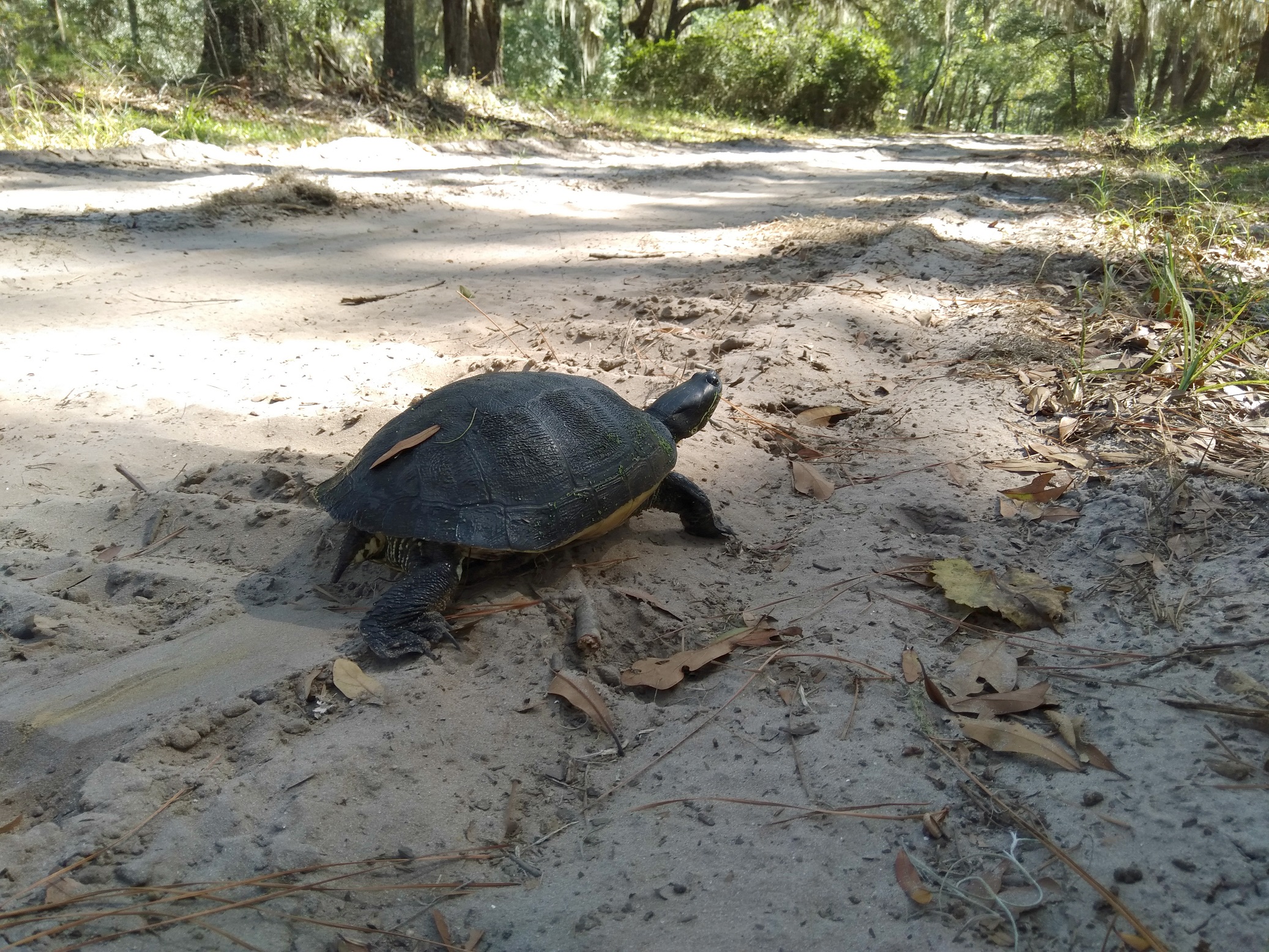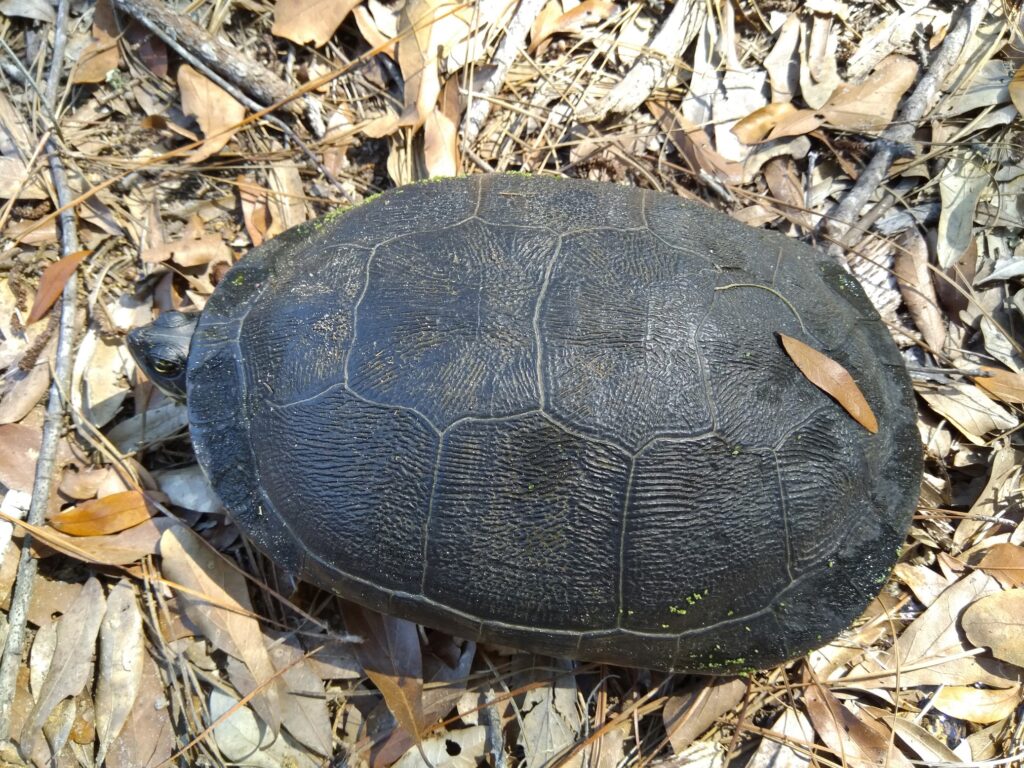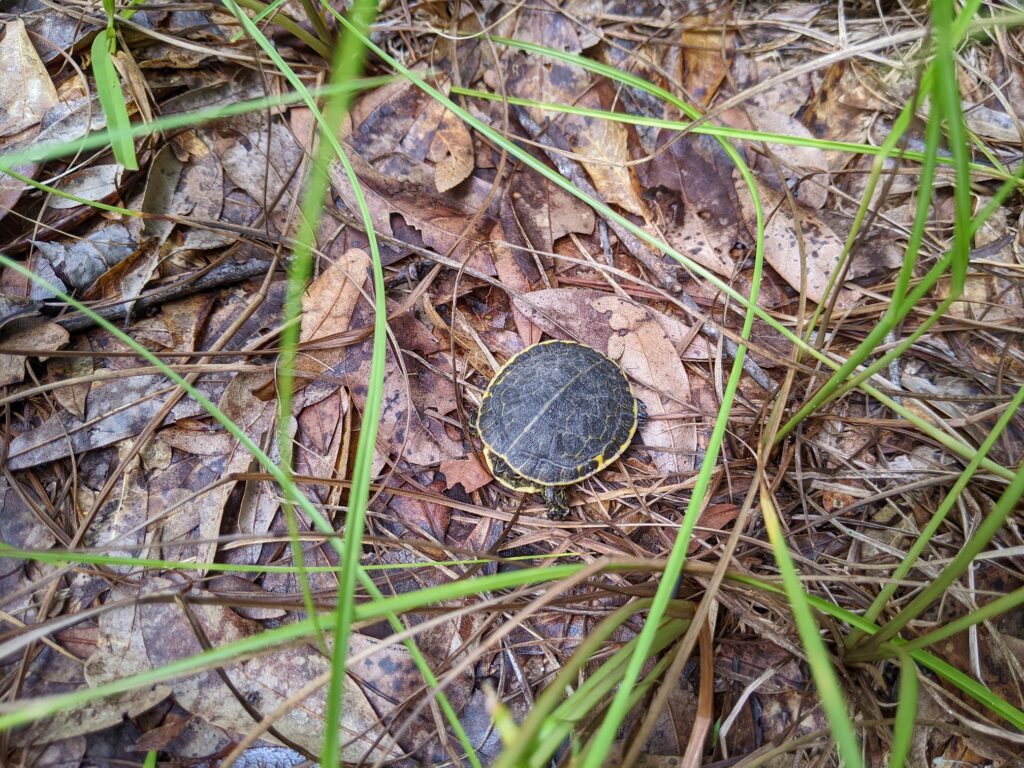




This week for Flora and Fauna Friday it’s a long-necked, fowl-flavored, slow-moving slough citizen of the Southeast, the Chicken Turtle (Deirochelys reticularia).
The Chicken Turtle is found throughout the coastal plain of South Carolina. It is scarcely seen in many locales but is particularly common here on Edisto Island. Chicken Turtles inhabit freshwater marshes, bottomland forests, backwaters, and other shallow, vegetated freshwater wetlands. Chicken Turtles share many physical characteristics with other turtle species in the family Emydidae, but have a few standout features of their own. In general appearance, their shell is a bit taller and smoother than other pond turtles. Their carapace has a faint yellow, net-like pattern across its top and their plastron is a solid golden-yellow below. A Chicken Turtle’s front legs have a thick yellow stripe running from toes to shoulder and the side of its head has thin, parallel yellow lines. However, the most standout feature of the Chicken Turtle is its head and neck. The head of a Chicken Turtle is noticeably longer than other pond turtles and its neck is proportionately almost twice as long as its cousins! Chicken Turtles use their long neck to hunt crayfish, small fish, insects, and amphibians. It allows them to reach out and suck up or snap down on prey at a distance in the shallow waters they inhabit, where moving quickly isn’t an option.
Chicken Turtles have some other interesting quirks as well. Unlike most turtles, they nest in fall and winter, rather than spring. Their eggs in tandem have a prolonged incubation time in response to colder temperatures, preventing hatching until spring. Further, rather than moving to a new home when their shallow wetlands dry out in summer, they instead head to the uplands to aestivate underground until the wetland floods again. Aestivation is similar to hibernation but is done in summer, usually by reptiles or amphibians and when the weather is too hot or too dry. Chicken Turtles also grow rather fast for a turtle but have a surprisingly short lifespan of only about 20 years.
Lastly, the name “Chicken Turtle” is a reference to the historical account that these turtles taste like chicken! It also is a fitting description of this turtle’s long chicken-like neck. Chicken Turtles were once a mainstay in the southern delicacy of turtle soup, as they apparently taste much better than our other turtles. Nowadays, turtle soup is no longer on the menu in Charleston. But it’s still a delicacy on the other side of the Earth. Until recently, there were practically no limitations on the collection of wild turtles in South Carolina. This resulted in South Carolina becoming a hotbed for poaching and the black market sale of our native turtles overseas to Asian meat markets. Our turtle populations crashed as a consequence and new laws were passed in 2020 to staunch the decline and crack down on poaching.